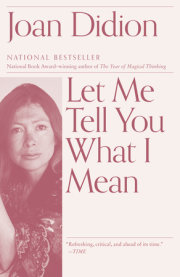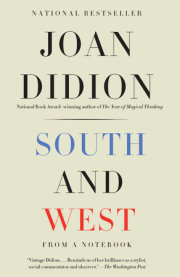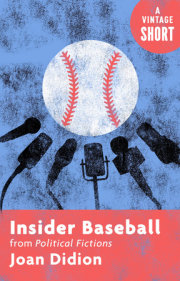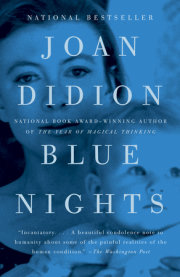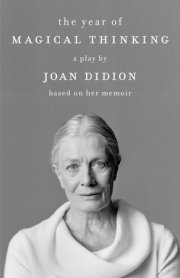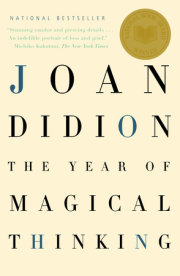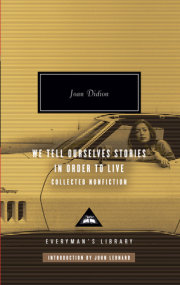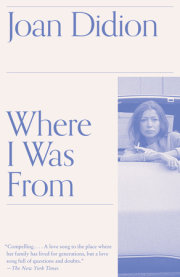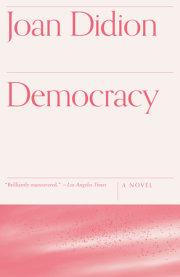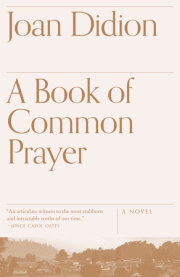Girl of the Golden West
The domestic details spring to memory. Early on the evening of February 4, 1974, in her duplex apartment at 2603 Benvenue in Berkeley, Patricia Campbell Hearst, age nineteen, a student of art history at the University of California at Berkeley and a granddaughter of the late William Randolph Hearst, put on a blue terry-cloth bathrobe, heated a can of chicken-noodle soup and made tuna fish sandwiches for herself and her fiancé, Steven Weed; watched
Mission Impossible and
The Magician on television; cleaned up the dishes; sat down to study just as the doorbell rang; was abducted at gunpoint and held blindfolded, by three men and five women who called themselves the Symbionese Liberation Army, for the next fifty-seven days.
From the fifty-eighth day, on which she agreed to join her captors and was photographed in front of the SLA's cobra flag carrying a sawed-off M-1 carbine, until September 18, 1975, when she was arrested in San Francisco, Patricia Campbell Hearst participated actively in the robberies of the Hibernia Bank in San Francisco and the Crocker National Bank outside Sacramento; sprayed Crenshaw Boulevard in Los Angeles with a submachine gun to cover a comrade apprehended for shoplifting; and was party or witness to a number of less publicized thefts and several bombings, to which she would later refer as "actions," or "operations."
On trial in San Francisco for the Hibernia Bank operation she appeared in court wearing frosted-white nail polish, and demonstrated for the jury the bolt action necessary to chamber an M-1. On a psychiatric test administered while she was in custody she completed the sentence "Most men . . ." with the words ". . . are assholes." Seven years later she was living with the bodyguard she had married, their infant daughter, and two German shepherds "behind locked doors in a Spanish-style house equipped with the best electronic security system available," describing herself as "older and wiser," and dedicating her account of these events,
Every Secret Thing, to "Mom and Dad."
It was a special kind of sentimental education, a public coming-of-age with an insistently literary cast to it, and it seemed at the time to offer a parable for the period. Certain of its images entered the national memory. We had Patricia Campbell Hearst in her first-communion dress, smiling, and we had Patricia Campbell Hearst in the Hibernia Bank surveillance stills, not smiling. We again had her smiling in the engagement picture, an unremarkably pretty girl in a simple dress on a sunny lawn, and we again had her not smiling in the "Tania" snapshot, the famous Polaroid with the M-1. We had her with her father and her sister Anne in a photograph taken at the Burlingame Country Club some months before the kidnapping: all three Hearsts smiling there, not only smiling but wearing leis, the father in maile and orchid leis, the daughters in pikake, that rarest and most expensive kind of lei, strand after strand of tiny Arabian jasmine buds strung like ivory beads.
We had the bank of microphones in front of the Hillsborough house whenever Randolph and Catherine Hearst ("Dad" and "Mom" in the first spectral messages from the absent daughter, "pig Hearsts" as the spring progressed) met the press, the potted flowers on the steps changing with the seasons, domestic upkeep intact in the face of crisis: azaleas, fuchsias, then cymbidium orchids massed for Easter. We had, early on, the ugly images of looting and smashed cameras and frozen turkey legs hurled through windows in West Oakland, the violent result of the Hearsts' first attempt to meet the SLA ransom demand, and we had, on television the same night, the news that William Knowland, the former United States senator from California and the most prominent member of the family that had run Oakland for half a century, had taken the pistol he was said to carry as protection against terrorists, positioned himself on a bank of the Russian River, and blown off the top of his head.
All of these pictures told a story, taught a dramatic lesson, carrying as they did the
frisson of one another, the invitation to compare and contrast. The image of Patricia Campbell Hearst on the FBI "wanted" fliers was for example cropped from the image of the unremarkably pretty girl in the simple dress on the sunny lawn, schematic evidence that even a golden girl could be pinned in the beam of history. There was no actual connection between turkey legs thrown through windows in West Oakland and William Knowland lying facedown in the Russian River, but the paradigm was manifest, one California busy being born and another busy dying. Those cymbidiums on the Hearsts' doorstep in Hillsborough dissolved before our eyes into the image of a flaming palm tree in south-central Los Angeles (the model again was two Californias), the palm tree above the stucco bungalow in which Patricia Campbell Hearst was believed for a time to be burning to death on live television. (Actually, Patricia Campbell Hearst was in yet a third California, a motel room at Disneyland, watching the palm tree burn as we all were, on television, and it was Donald DeFreeze, Nancy Ling Perry, Angela Atwood, Patricia Soltysik, Camilla Hall, and William Wolfe, one black escaped convict and five children of the white middle class, who were dying in the stucco bungalow.)
Not only the images but the voice told a story, the voice on the tapes, the depressed voice with the California inflection, the voice that trailed off, now almost inaudible, then a hint of whine, a schoolgirl's sarcasm, a voice every parent recognized:
Mom, Dad. I'm OK. I had a few scrapes and stuff, but they washed them up. . . . I just hope you'll do what they say, Dad. . . . If you can get the food thing organized before the nineteenth then that's OK. . . . Whatever you come up with is basically OK, it was never intended that you feed the whole state. . . . I am here because I am a member of a ruling-class family and I think you can begin to see the analogy. . . . People should stop acting like I'm dead, Mom should get out of her black dress, that doesn't help at all. . . . Mom, Dad . . . I don't believe you're doing all you can . . . Mom, Dad . . . I'm starting to think that no one is concerned about me anymore. . . . And then:
Greetings to the people. This is Tania.Patricia Campbell Hearst's great-grandfather had arrived in California by foot in 1850, unschooled, unmarried, thirty years old with few graces and no prospects, a Missouri farmer's son who would spend his thirties scratching around El Dorado and Nevada and Sacramento counties looking for a stake. In 1859 he found one, and at his death in 1891 George Hearst could leave the schoolteacher he had married in 1862 a fortune taken from the ground, the continuing proceeds from the most productive mines of the period, the Ophir in Nevada, the Homestake in South Dakota, the Ontario in Utah, the Anaconda in Montana, the San Luis in Mexico. The widow, Phoebe Apperson Hearst, a tiny, strong-minded woman then only forty-eight years old, took this apparently artesian income and financed her only child in the publishing empire he wanted, underwrote a surprising amount of the campus where her great-granddaughter would be enrolled at the time she was kidnapped, and built for herself, on sixty-seven thousand acres on the McCloud River in Siskiyou County, the original Wyntoon, a quarried-lava castle of which its architect, Bernard Maybeck, said simply: "Here you can reach all that is within you."
The extent to which certain places dominate the California imagination is apprehended, even by Californians, only dimly. Deriving not only from the landscape but from the claiming of it, from the romance of emigration, the radical abandonment of established attachments, this imagination remains obdurately symbolic, tending to locate lessons in what the rest of the country perceives only as scenery. Yosemite, for example, remains what Kevin Starr has called "one of the primary California symbols, a fixed factor of identity for all those who sought a primarily Californian aesthetic." Both the community of and the coastline at Carmel have a symbolic meaning lost to the contemporary visitor, a lingering allusion to art as freedom, freedom as craft, the "bohemian" pantheism of the early twentieth century. The Golden Gate Bridge, referring as it does to both the infinite and technology, suggests, to the Californian, a quite complex representation of land's end, and also of its beginning.
Patricia Campbell Hearst told us in
Every Secret Thing that the place the Hearsts called Wyntoon was "a mystical land," "fantastic, otherworldly," "even more than San Simeon," which was in turn "so emotionally moving that it is still beyond my powers of description." That first Maybeck castle on the McCloud River was seen by most Californians only in photographs, and yet, before it burned in 1933, to be replaced by a compound of rather more playful Julia Morgan chalets ("Cinderella House," "Angel House," "Brown Bear House"), Phoebe Hearst's gothic Wyntoon and her son's baroque San Simeon seemed between them to embody certain opposing impulses in the local consciousness: northern and southern, wilderness sanctified and wilderness banished, the aggrandizement of nature and the aggrandizement of self. Wyntoon had mists, and allusions to the infinite, great trunks of trees left to rot where they fell, a wild river, barbaric fireplaces. San Simeon, swimming in sunlight and the here and now, had two swimming pools, and a zoo.
It was a family in which the romantic impulse would seem to have dimmed. Patricia Campbell Hearst told us that she "grew up in an atmosphere of clear blue skies, bright sunshine, rambling open spaces, long green lawns, large comfortable houses, country clubs with swimming pools and tennis courts and riding horses." At the Convent of the Sacred Heart in Menlo Park she told a nun to "go to hell," and thought herself "quite courageous, although very stupid." At Santa Catalina in Monterey she and Patricia Tobin, whose family founded one of the banks the SLA would later rob, skipped Benediction, and received "a load of demerits." Her father taught her to shoot, duck hunting. Her mother did not allow her to wear jeans into San Francisco. These were inheritors who tended to keep their names out of the paper, to exhibit not much interest in the world at large ("Who the hell is this guy again?" Randolph Hearst asked Steven Weed when the latter suggested trying to approach the SLA through Regis Debray, and then, when told, said, "We need a goddamn South American revolutionary mixed up in this thing like a hole in the head"), and to regard most forms of distinction with the reflexive distrust of the country club.
Yet if the Hearsts were no longer a particularly arresting California family, they remained embedded in the symbolic content of the place, and for a Hearst to be kidnapped from Berkeley, the very citadel of Phoebe Hearst's aspiration, was California as opera. "My thoughts at this time were focused on the single issue of survival," the heiress to Wyntoon and San Simeon told us about the fifty-seven days she spent in the closet. "Concerns over love and marriage, family life, friends, human relationships, my whole previous life, had really become, in SLA terms, bourgeois luxuries."
This abrupt sloughing of the past has, to the California ear, a distant echo, and the echo is of emigrant diaries. "Don't let this letter dishearten anybody, never take no cutoffs and hurry along as fast as you can," one of the surviving children of the Donner Party concluded her account of that crossing. "Don't worry about it," the author of
Every Secret Thing reported having told herself in the closet after her first sexual encounter with a member of the SLA. "Don't examine your feelings. Never examine your feelings-they're no help at all." At the time Patricia Campbell Hearst was on trial in San Francisco, a number of psychiatrists were brought in to try to plumb what seemed to some an unsoundable depth in the narrative, that moment at which the victim binds over her fate to her captors. "She experienced what I call the death anxiety and the breaking point," Robert Jay Lifton, who was one of these psychiatrists, said. "Her external points of reference for maintenance of her personality had disappeared," Louis Jolyon West, another of the psychiatrists, said. Those were two ways of looking at it, and another was that Patricia Campbell Hearst had cut her losses and headed west, as her great-grandfather had before her.
The story she told in 1982 in
Every Secret Thing was received, in the main, querulously, just as it had been when she told it during
The United States of America v. Patricia Campbell Hearst, the 1976 proceeding during which she was tried for and convicted of the armed robbery of the Hibernia Bank (one count), and (the second count) the use of a weapon during the commission of a felony. Laconic, slightly ironic, resistant not only to the prosecution but to her own defense, Patricia Hearst was not, on trial in San Francisco, a conventionally ingratiating personality. "I don't know," I recall her saying over and over again during the few days I attended the trial. "I don't remember." "I suppose so." Had there not been, the prosecutor asked one day, telephones in the motels in which she had stayed when she drove across the country with Jack Scott? I recall Patricia Hearst looking at him as if she thought him deranged. I recall Randolph Hearst looking at the floor. I recall Catherine Hearst arranging a Galanos jacket over the back of her seat.
"Yes, I'm sure," their daughter said.
Where, the prosecutor asked, were these motels?
"One was . . . I think . . . " Patricia Hearst paused, and then: "Cheyenne? Wyoming?" She pronounced the names as if they were foreign, exotic, information registered and jettisoned. One of these motels had been in Nevada, the place from which the Hearst money originally came: the heiress pronounced the name Nevahda, like a foreigner.
In
Every Secret Thing as at her trial, she seemed to project an emotional distance, a peculiar combination of passivity and pragmatic recklessness ("I had crossed over. And I would have to make the best of it . . . to live from day to day, to do whatever they said, to play my part, and to pray that I would survive") that many people found inexplicable and irritating. In 1982 as in 1976, she spoke only abstractly about why, but quite specifically about
how. "I could not believe that I had actually fired that submachine gun," she said of the incident in which she shot up Crenshaw Boulevard, but here was how she did it: "I kept my finger pressed on the trigger until the entire clip of thirty shots had been fired. . . . I then reached for my own weapon, the semiautomatic carbine. I got off three more shots. . . . "
Copyright © 2004 by Joan Didion. All rights reserved. No part of this excerpt may be reproduced or reprinted without permission in writing from the publisher.


